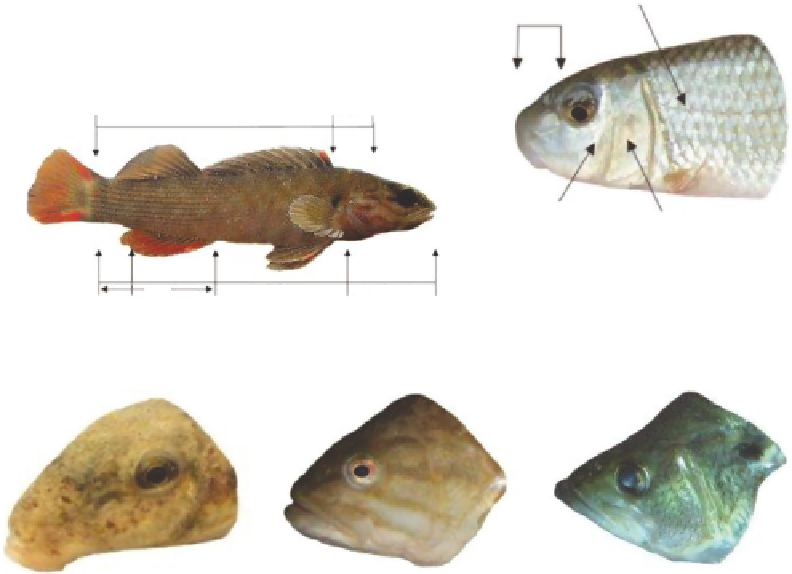Environmental Engineering Reference
In-Depth Information
Pectoral
1st dorsal
2nd dorsal
Caudal
Dorsal spines
Dorsal soft rays
Pelvic
Anal
Lateral line
Fin anatomy
Snout
Dorsal
Body
Nape
Anterior
Posterior
Cheek
Opercle
Head anatomy
Tail
Trunk
Head
Caudal
peduncle
Ventral
Body anatomy
Inferior
Te rminal
Superior (moderately)
Mouth orientations
FIGURE 6.17
Fish anatomy. (From U.S. EPA, Biological indicators of watershed health, Available at
http://www.epa.gov/bioiweb1/html/ish_id.html.)
barbels, whiskers, or mouth projections on some bottom-feeding ish also provide a sense of touch
as well as taste.
The body shape of ish is a good indicator of their environment. For example, slender and
torpedo-shaped ish are adapted to fast-moving waters. The location of the mouth in a ish is also
an indication of its feeding habits. Surface-feeding ish usually have an upturned (superior) mouth,
while bottom-feeding ish generally have a downturned or inferior mouth. Predatory ish usually
have a wide mouth, while omnivorous ish have smaller mouths. Some bottom-dwelling ish that
feed on algae, such as the Loricariidae or suckers, have a suction-cup-like mouth.
Some of the common taxonomic orders of ish are illustrated in Figure 6.18. Grabarkiewicz and
Davis (2008) describe each order's characteristics, as well as methods of collection. Some ish are


Search WWH ::

Custom Search